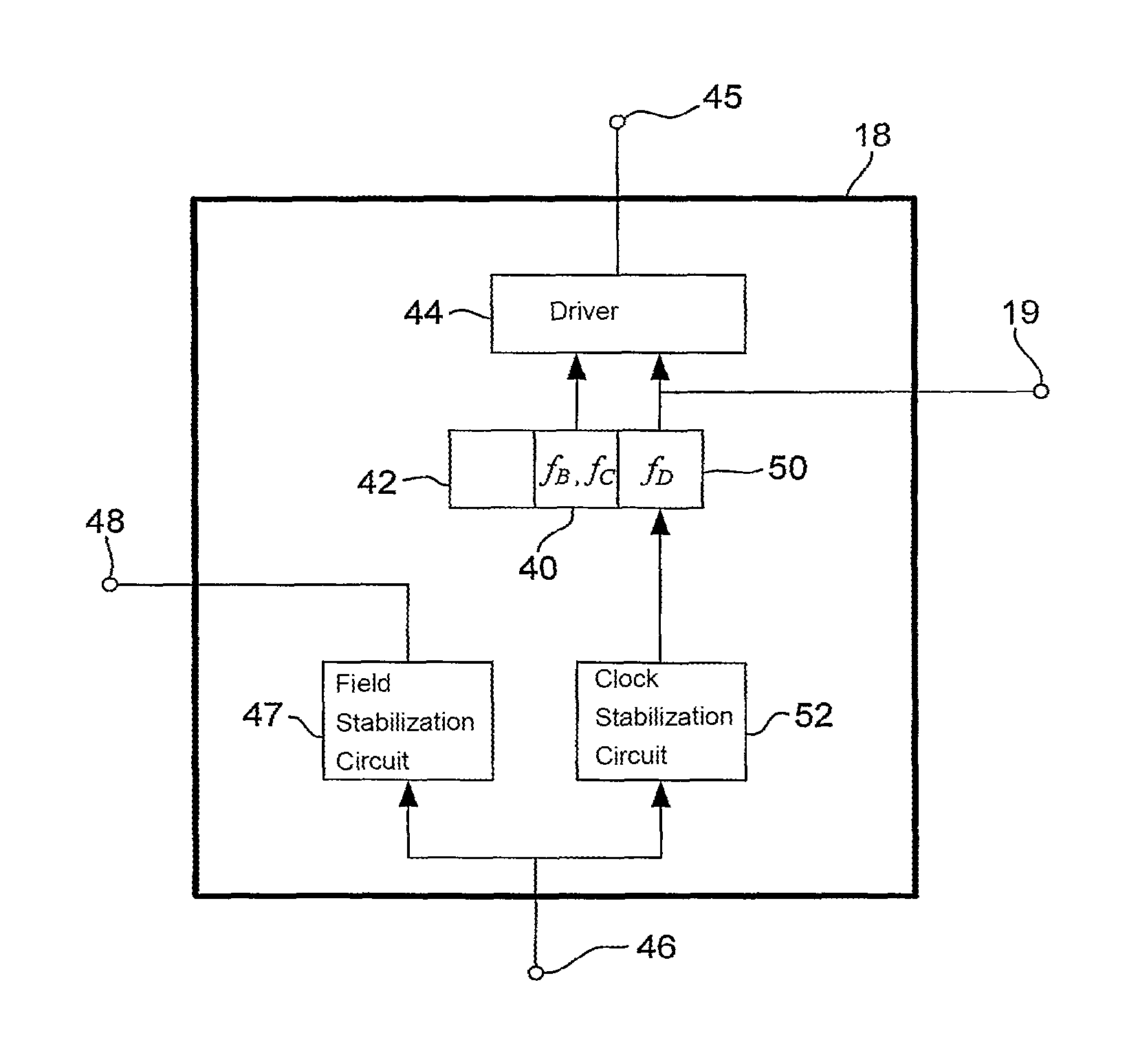Atomic clock
a technology of atomic clocks and atomic clocks, which is applied in the field of timekeeping devices, can solve the problems of large size, significant power requirements, and delicate nature of conventional atomic clocks, and achieve the effects of reducing environmental influence on timekeeping, compact, reliable, portable and low-power atomic clocks
- Summary
- Abstract
- Description
- Claims
- Application Information
AI Technical Summary
Benefits of technology
Problems solved by technology
Method used
Image
Examples
Embodiment Construction
[0018]FIG. 1 shows components of an atomic clock according to an embodiment of the invention. It should, of course, be noted that the term “atomic clock” is simply a convenient shorthand term for such devices. Firstly, they need not necessarily be “clocks”. The heart of the device is an oscillator that can provide oscillations at a stable frequency. For this reasons, such devices may also be known as “frequency standards”. By counting the oscillations of the standard frequency the clock function can be obtained because each oscillation represents a precise period of time. Secondly, the system undergoing the oscillations does not necessarily have to be “atomic” i.e. a single atom or atoms, but could also be ions, atomic clusters, molecular fragments, small molecules or other suitable species. The term “atomic clock” is used herein for convenience and is understood by the person skilled in the art to encompass all of the above terms and further alternatives.
[0019]Referring to FIG. 1, ...
PUM
 Login to View More
Login to View More Abstract
Description
Claims
Application Information
 Login to View More
Login to View More - R&D
- Intellectual Property
- Life Sciences
- Materials
- Tech Scout
- Unparalleled Data Quality
- Higher Quality Content
- 60% Fewer Hallucinations
Browse by: Latest US Patents, China's latest patents, Technical Efficacy Thesaurus, Application Domain, Technology Topic, Popular Technical Reports.
© 2025 PatSnap. All rights reserved.Legal|Privacy policy|Modern Slavery Act Transparency Statement|Sitemap|About US| Contact US: help@patsnap.com



